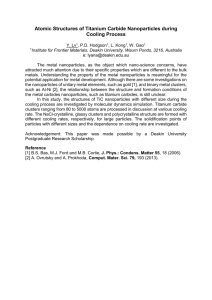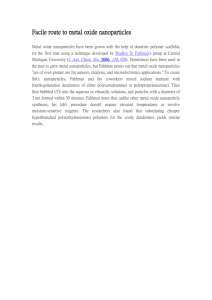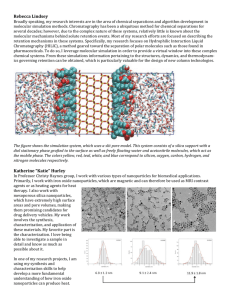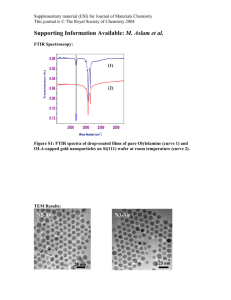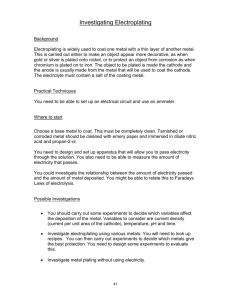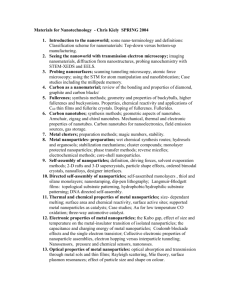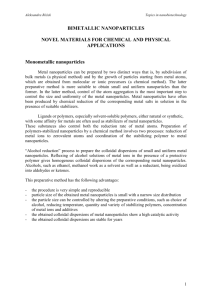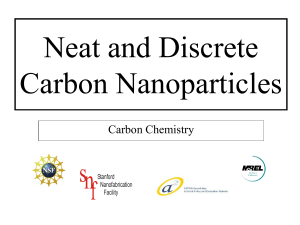On the Chemistry of the Resveratrol Diastereomers
advertisement
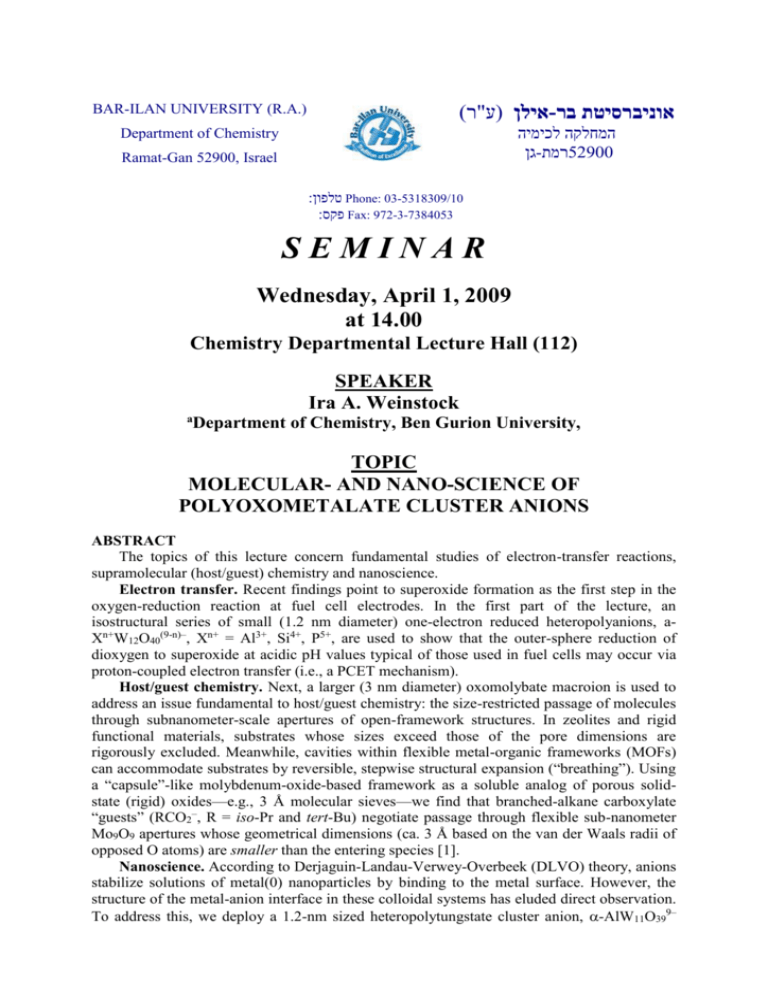
BAR-ILAN UNIVERSITY (R.A.) )אילן (ע"ר-אוניברסיטת בר Department of Chemistry המחלקה לכימיה גן-רמת52900 Ramat-Gan 52900, Israel : טלפוןPhone: 03-5318309/10 : פקסFax: 972-3-7384053 SEMINAR Wednesday, April 1, 2009 at 14.00 Chemistry Departmental Lecture Hall (112) SPEAKER Ira A. Weinstock a Department of Chemistry, Ben Gurion University, TOPIC MOLECULAR- AND NANO-SCIENCE OF POLYOXOMETALATE CLUSTER ANIONS ABSTRACT The topics of this lecture concern fundamental studies of electron-transfer reactions, supramolecular (host/guest) chemistry and nanoscience. Electron transfer. Recent findings point to superoxide formation as the first step in the oxygen-reduction reaction at fuel cell electrodes. In the first part of the lecture, an isostructural series of small (1.2 nm diameter) one-electron reduced heteropolyanions, aXn+W12O40(9-n)–, Xn+ = Al3+, Si4+, P5+, are used to show that the outer-sphere reduction of dioxygen to superoxide at acidic pH values typical of those used in fuel cells may occur via proton-coupled electron transfer (i.e., a PCET mechanism). Host/guest chemistry. Next, a larger (3 nm diameter) oxomolybate macroion is used to address an issue fundamental to host/guest chemistry: the size-restricted passage of molecules through subnanometer-scale apertures of open-framework structures. In zeolites and rigid functional materials, substrates whose sizes exceed those of the pore dimensions are rigorously excluded. Meanwhile, cavities within flexible metal-organic frameworks (MOFs) can accommodate substrates by reversible, stepwise structural expansion (“breathing”). Using a “capsule”-like molybdenum-oxide-based framework as a soluble analog of porous solidstate (rigid) oxides—e.g., 3 Å molecular sieves—we find that branched-alkane carboxylate “guests” (RCO2–, R = iso-Pr and tert-Bu) negotiate passage through flexible sub-nanometer Mo9O9 apertures whose geometrical dimensions (ca. 3 Å based on the van der Waals radii of opposed O atoms) are smaller than the entering species [1]. Nanoscience. According to Derjaguin-Landau-Verwey-Overbeek (DLVO) theory, anions stabilize solutions of metal(0) nanoparticles by binding to the metal surface. However, the structure of the metal-anion interface in these colloidal systems has eluded direct observation. To address this, we deploy a 1.2-nm sized heteropolytungstate cluster anion, -AlW11O399– (1), which features 11 W atoms (Z = 183) for effective imaging by electron microscopy, and a high negative charge to enhance binding to Ag(0) and Au(0) nanoparticles. Cryogenic methods are then used to “trap” the 1-protected nanoparticles at liquid-N2 temperatures within a water-glass matrix. The “solution-state” structures thus captured provide the first reported TEM images of self-assembled monolayers (SAMs) of anions on colloidal metal(0) nanoparticles. Results from ongoing kinetic/mechanistic investigations of ligand exchange and monolayer formation on metal nanoparticles and binary-salt nanocrystals, and other reactions will be included [2]. ____ [1] Ziv, A.; Grego, A.; Kopilevich, S.; Zeiri, L.; Miro, P.; Bo, C.; Müller, A.; Weinstock, I. A. “Flexible Pores of a Metal-Oxide-Based Capsule Permit Entry of Comparatively Larger Organic Guests” J. Am. Chem. Soc. 2009, 131, ASAP: March 17, 2009. To be highlighted on the cover of JACS, Vol. 131, Issue 18, May 13, 2009. [2] Neyman, A.; Meshi, L.; Zeiri, L.; Weinstock, I. A. “Direct imaging of the ligand monolayer on an anionprotected metal nanoparticle through cryogenic trapping of its solution-state structure” J. Am. Chem. Soc. 2008, 130, 16480-16481.


